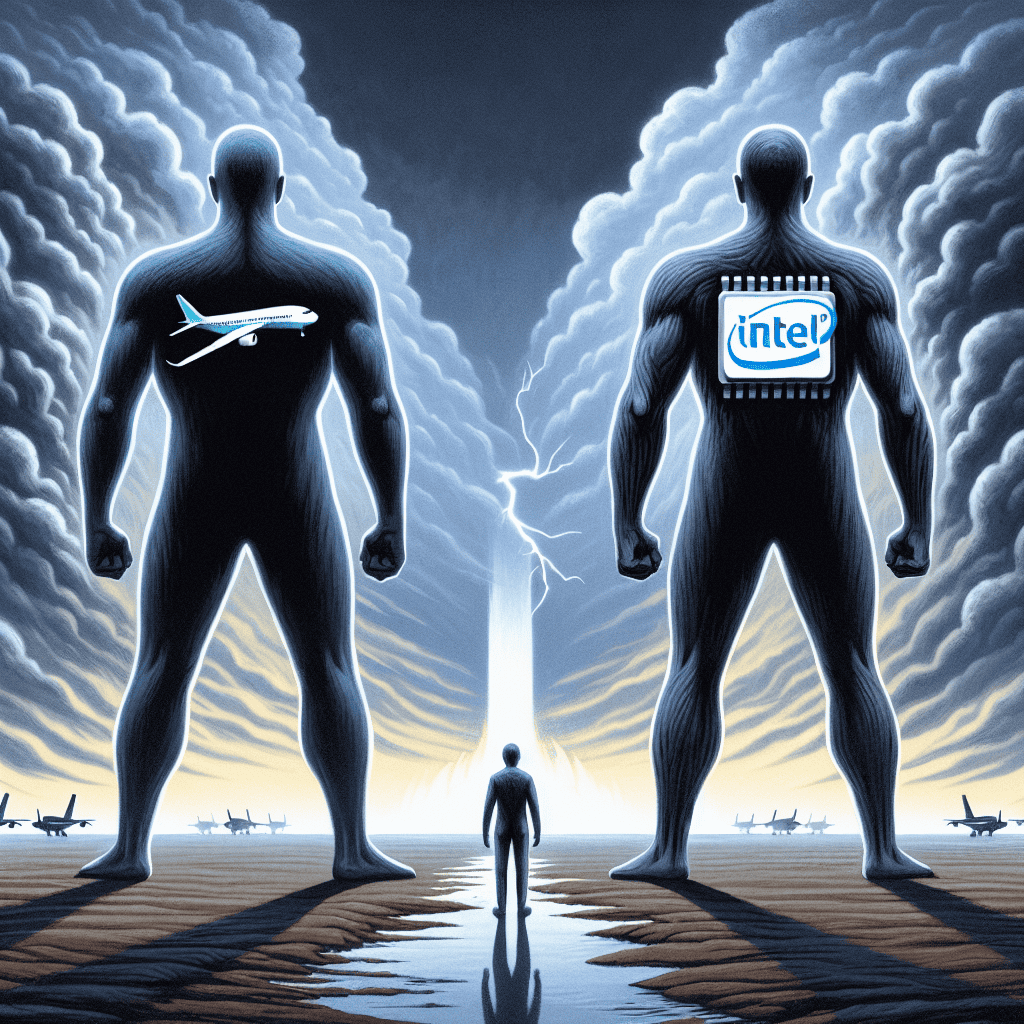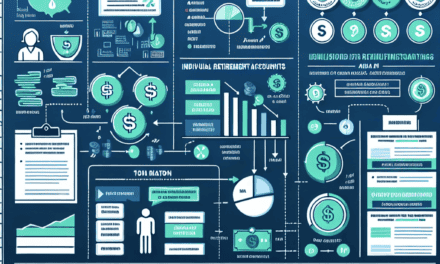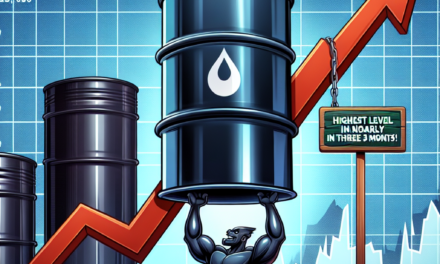“Navigating Turbulence: Boeing and Intel Face a National Crisis”
Introduction
Boeing and Intel, two titans of American industry, are facing unprecedented challenges that have escalated into a national crisis. Boeing, a leader in aerospace manufacturing, has been grappling with production setbacks, regulatory scrutiny, and financial instability, exacerbated by the grounding of its 737 MAX fleet and the global downturn in air travel. Meanwhile, Intel, a cornerstone of the semiconductor industry, is contending with fierce competition, supply chain disruptions, and technological lag in the race for advanced chip manufacturing. These challenges not only threaten the stability and future growth of these iconic companies but also have significant implications for the U.S. economy, national security, and technological leadership on the global stage. As these crises unfold, they underscore the urgent need for strategic interventions and innovations to restore confidence and ensure resilience in these critical sectors.
Boeing’s Supply Chain Disruptions: Impact on Production and Delivery
Boeing, a titan in the aerospace industry, has long been a symbol of American innovation and engineering prowess. However, recent supply chain disruptions have posed significant challenges to its production and delivery processes, creating a ripple effect that extends beyond the company itself. These disruptions, exacerbated by the global pandemic and geopolitical tensions, have highlighted vulnerabilities within Boeing’s supply chain, which relies heavily on a complex network of suppliers and manufacturers worldwide. As a result, the company has faced delays in the production of its commercial aircraft, notably the 737 MAX and the 787 Dreamliner, which are critical to its financial health and market competitiveness.
The impact of these supply chain issues is multifaceted. Firstly, the delays in aircraft production have strained relationships with airlines, which depend on timely deliveries to meet their operational needs and expansion plans. Airlines, already reeling from the pandemic’s impact on travel demand, are now grappling with the uncertainty of aircraft availability, which affects their capacity planning and financial projections. Consequently, this has led to a cascade of challenges, including potential revenue losses and increased operational costs as airlines are forced to lease older aircraft or delay the retirement of less efficient models.
Moreover, Boeing’s supply chain disruptions have broader economic implications. The aerospace industry is a significant contributor to the U.S. economy, supporting millions of jobs across various sectors, including manufacturing, engineering, and services. Delays in production and delivery not only affect Boeing’s workforce but also have a downstream impact on its suppliers, many of which are small to medium-sized enterprises that rely heavily on Boeing contracts. This situation underscores the interconnectedness of the aerospace supply chain and the potential for localized disruptions to escalate into a national economic concern.
In response to these challenges, Boeing has been actively working to stabilize its supply chain and mitigate further disruptions. The company has increased its engagement with suppliers, seeking to enhance communication and collaboration to address bottlenecks and improve efficiency. Additionally, Boeing is exploring strategies to diversify its supplier base, reducing dependency on single-source suppliers and increasing resilience against geopolitical and economic uncertainties. These efforts are crucial not only for Boeing’s recovery but also for restoring confidence among its stakeholders, including investors, customers, and employees.
However, the path to recovery is fraught with complexities. The aerospace industry is inherently global, and supply chain resilience requires coordinated efforts across borders and industries. Furthermore, the ongoing semiconductor shortage, which has also affected companies like Intel, adds another layer of complexity to Boeing’s challenges. Semiconductors are essential components in modern aircraft systems, and their scarcity has further strained production timelines.
In conclusion, Boeing’s supply chain disruptions represent a significant challenge not only for the company but also for the broader aerospace industry and the national economy. The situation calls for a concerted effort to enhance supply chain resilience, ensuring that Boeing and its partners can navigate future disruptions more effectively. As Boeing continues to address these challenges, the lessons learned will be invaluable in shaping a more robust and adaptable aerospace industry, capable of withstanding the uncertainties of a rapidly changing global landscape.
Intel’s Struggle with Semiconductor Shortages: A Global Concern
In recent years, the global semiconductor shortage has emerged as a significant concern, affecting industries worldwide and highlighting vulnerabilities in supply chains. Intel, a leading player in the semiconductor industry, finds itself at the center of this crisis, grappling with challenges that have far-reaching implications. The shortage, initially triggered by disruptions during the COVID-19 pandemic, has been exacerbated by a surge in demand for electronic devices, automotive components, and other technology-dependent products. As a result, Intel’s struggle to meet the growing demand for semiconductors has become a focal point in discussions about the resilience and sustainability of global supply chains.
The semiconductor shortage has not only impacted Intel but has also reverberated across various sectors, including automotive, consumer electronics, and telecommunications. Companies reliant on these critical components have faced production delays, increased costs, and, in some cases, halted operations. This situation underscores the interconnectedness of modern industries and the pivotal role semiconductors play in the global economy. As Intel navigates these challenges, it is imperative to consider the broader implications for technological advancement and economic stability.
One of the primary factors contributing to the semiconductor shortage is the complex and geographically dispersed nature of the supply chain. Semiconductor manufacturing involves multiple stages, from design and fabrication to testing and packaging, often spread across different countries. This complexity makes the supply chain susceptible to disruptions, whether due to natural disasters, geopolitical tensions, or unexpected surges in demand. Intel, like many other companies, has been forced to reevaluate its supply chain strategies, seeking ways to enhance resilience and reduce dependency on single points of failure.
In response to the crisis, Intel has announced plans to invest heavily in expanding its manufacturing capabilities. This includes the construction of new fabrication plants, or fabs, in the United States and other strategic locations. By increasing domestic production capacity, Intel aims to mitigate the risks associated with global supply chain disruptions and ensure a more stable supply of semiconductors. However, building new fabs is a time-consuming and capital-intensive process, and it will take years before these facilities can significantly alleviate the current shortage.
Moreover, Intel’s efforts to address the semiconductor shortage are part of a broader national and international push to bolster semiconductor manufacturing capabilities. Governments around the world, recognizing the strategic importance of semiconductors, have introduced policies and incentives to encourage domestic production. In the United States, for instance, the CHIPS for America Act aims to provide funding and support for semiconductor research and manufacturing. Such initiatives reflect a growing awareness of the need to secure supply chains and reduce reliance on foreign sources for critical technologies.
While Intel’s struggle with semiconductor shortages presents immediate challenges, it also offers an opportunity for innovation and collaboration. By investing in research and development, Intel can explore new technologies and manufacturing processes that enhance efficiency and reduce resource consumption. Additionally, collaboration with other industry players, governments, and research institutions can foster a more resilient and sustainable semiconductor ecosystem.
In conclusion, the semiconductor shortage represents a significant challenge for Intel and the global economy. As the company works to overcome these obstacles, it must navigate a complex landscape of supply chain vulnerabilities, geopolitical considerations, and technological advancements. Through strategic investments and collaborative efforts, Intel has the potential to not only address the current crisis but also contribute to a more robust and sustainable future for the semiconductor industry.
Boeing’s Safety and Regulatory Challenges: Navigating a Complex Landscape
Boeing, a titan in the aerospace industry, has long been synonymous with innovation and reliability. However, recent years have seen the company grappling with significant safety and regulatory challenges that have not only impacted its reputation but also raised broader concerns about the state of American manufacturing and regulatory oversight. As Boeing navigates this complex landscape, it becomes imperative to understand the multifaceted nature of these challenges and their implications for the industry at large.
The most prominent issue facing Boeing has been the fallout from the 737 Max crisis. Following two tragic crashes that resulted in the loss of 346 lives, the aircraft was grounded worldwide in 2019. Investigations revealed that a faulty automated flight control system, known as the Maneuvering Characteristics Augmentation System (MCAS), was a significant factor in both accidents. This revelation not only highlighted deficiencies in Boeing’s design and testing processes but also exposed lapses in regulatory oversight by the Federal Aviation Administration (FAA). The subsequent scrutiny led to a comprehensive review of Boeing’s safety protocols and a reevaluation of the FAA’s certification procedures.
In response to these challenges, Boeing has undertaken extensive efforts to enhance its safety culture and restore trust among regulators, airlines, and the flying public. The company has implemented rigorous internal audits, revamped its engineering practices, and increased transparency in its communications with regulatory bodies. Moreover, Boeing has committed to fostering a culture where safety is prioritized over production schedules and financial targets. These measures, while crucial, represent only the beginning of a long journey toward rebuilding its reputation.
Simultaneously, Boeing faces the challenge of navigating an increasingly complex regulatory environment. The global nature of the aerospace industry means that Boeing must comply with a myriad of regulations from different countries, each with its own standards and expectations. This complexity is further compounded by geopolitical tensions, trade disputes, and the evolving landscape of international aviation regulations. As a result, Boeing must remain agile and proactive in its approach to regulatory compliance, ensuring that it not only meets but exceeds the expectations of regulators worldwide.
The challenges confronting Boeing are emblematic of broader issues within the American manufacturing sector. The decline in manufacturing jobs, coupled with increasing competition from international players, has put pressure on companies to cut costs and streamline operations. In some cases, this has led to compromises in quality and safety, as evidenced by the 737 Max crisis. Consequently, there is a growing call for a reevaluation of the regulatory framework governing the industry, with an emphasis on strengthening oversight and ensuring that safety is never compromised for the sake of expediency.
In conclusion, Boeing’s safety and regulatory challenges underscore the need for a concerted effort to address systemic issues within the aerospace industry and the broader manufacturing sector. As Boeing works to navigate this complex landscape, it must remain steadfast in its commitment to safety and regulatory compliance. At the same time, regulators must enhance their oversight capabilities to ensure that the highest standards are maintained. By doing so, both Boeing and the industry at large can work towards restoring public confidence and securing a sustainable future for American manufacturing.
Intel’s Competition in the Global Market: Maintaining Technological Leadership

In the rapidly evolving landscape of global technology, Intel has long been a stalwart, maintaining its position as a leader in semiconductor manufacturing. However, the company now faces unprecedented challenges that threaten its dominance. As the global market becomes increasingly competitive, Intel must navigate a complex web of technological advancements, geopolitical tensions, and shifting consumer demands to maintain its leadership. The rise of formidable competitors, particularly from Asia, has intensified the pressure on Intel to innovate and adapt. Companies such as Taiwan Semiconductor Manufacturing Company (TSMC) and Samsung have made significant strides in semiconductor technology, often outpacing Intel in the race to produce smaller, more efficient chips. This competition has forced Intel to reevaluate its strategies and invest heavily in research and development to keep pace with its rivals.
Moreover, the global semiconductor shortage has further complicated Intel’s position. This shortage, exacerbated by the COVID-19 pandemic, has highlighted vulnerabilities in the supply chain and underscored the need for increased domestic production capabilities. In response, Intel has announced plans to build new manufacturing facilities in the United States, aiming to bolster its production capacity and reduce reliance on overseas suppliers. This move is not only a strategic effort to address supply chain issues but also a response to growing calls for technological self-sufficiency in the face of geopolitical uncertainties.
In addition to external pressures, Intel faces internal challenges that could impact its ability to maintain technological leadership. The company has undergone significant leadership changes in recent years, with new executives tasked with steering Intel through this tumultuous period. These changes have brought fresh perspectives and strategies, but they also require time to implement and yield results. As Intel works to regain its footing, it must also contend with the rapid pace of technological change. The advent of artificial intelligence, 5G, and the Internet of Things presents both opportunities and challenges for the company. To capitalize on these emerging technologies, Intel must not only innovate but also ensure that its products are adaptable and scalable to meet the diverse needs of a global market.
Furthermore, Intel’s commitment to sustainability and ethical practices is increasingly scrutinized by consumers and investors alike. As environmental concerns take center stage, the company must demonstrate its dedication to reducing its carbon footprint and promoting sustainable practices throughout its operations. This commitment is not only a moral imperative but also a strategic necessity, as consumers and businesses increasingly prioritize sustainability in their purchasing decisions.
In conclusion, Intel’s ability to maintain its technological leadership in the global market hinges on its capacity to navigate a myriad of challenges. From fierce competition and supply chain vulnerabilities to internal restructuring and the demands of emerging technologies, the company must remain agile and forward-thinking. By investing in innovation, expanding domestic production, and prioritizing sustainability, Intel can position itself to not only weather the current storm but also emerge stronger and more resilient. As the world continues to grapple with the implications of technological advancement, Intel’s journey will undoubtedly serve as a bellwether for the broader industry, illustrating the complexities and opportunities inherent in maintaining leadership in an ever-changing global market.
Boeing’s Financial Strain: Strategies for Recovery and Growth
Boeing, a titan in the aerospace industry, has long been a symbol of American innovation and industrial prowess. However, recent years have seen the company grappling with significant financial strain, a situation exacerbated by a series of unfortunate events and global challenges. As Boeing navigates these turbulent times, it is imperative to explore the strategies it is employing to recover and foster growth, while also considering the broader implications for the national economy.
The financial difficulties faced by Boeing can be traced back to several key factors. The grounding of the 737 MAX fleet following two fatal crashes dealt a severe blow to the company’s reputation and financial standing. This crisis was compounded by the COVID-19 pandemic, which led to a dramatic decline in air travel and, consequently, a reduced demand for new aircraft. As a result, Boeing has been forced to reassess its strategies and implement measures aimed at stabilizing its financial position.
One of the primary strategies Boeing has adopted is cost reduction. The company has undertaken significant restructuring efforts, including workforce reductions and streamlining operations, to align its cost structure with the current market realities. By focusing on efficiency and eliminating redundancies, Boeing aims to improve its financial health and position itself for future growth. Additionally, the company has been renegotiating contracts with suppliers to secure more favorable terms, thereby reducing its overall expenditure.
In tandem with cost-cutting measures, Boeing is also investing in innovation and technology to drive long-term growth. The company recognizes that staying at the forefront of technological advancements is crucial to maintaining its competitive edge. To this end, Boeing is channeling resources into research and development, with a particular emphasis on sustainable aviation solutions. By prioritizing eco-friendly technologies, such as electric and hybrid propulsion systems, Boeing is not only addressing environmental concerns but also tapping into a growing market demand for greener aviation options.
Moreover, Boeing is actively seeking to diversify its revenue streams. While commercial aircraft sales have traditionally been the company’s primary source of income, Boeing is increasingly focusing on expanding its defense and space divisions. These sectors offer more stable revenue opportunities, especially in light of rising global defense budgets and the burgeoning interest in space exploration. By leveraging its expertise in these areas, Boeing aims to mitigate the impact of fluctuations in the commercial aviation market.
In addition to internal strategies, Boeing is also engaging with external stakeholders to bolster its recovery efforts. The company is working closely with regulatory bodies to ensure compliance and restore confidence in its products. Furthermore, Boeing is collaborating with airlines and leasing companies to develop flexible financing solutions that facilitate aircraft purchases in the current economic climate.
The challenges faced by Boeing are not isolated; they have broader implications for the national economy. As one of the largest exporters in the United States, Boeing’s financial health is intrinsically linked to the country’s economic performance. The company’s struggles have a ripple effect on its extensive supply chain, impacting thousands of jobs and businesses across the nation. Consequently, Boeing’s recovery is not just a corporate concern but a national priority.
In conclusion, Boeing’s financial strain presents a complex challenge that requires a multifaceted approach. Through cost reduction, innovation, diversification, and strategic partnerships, the company is striving to navigate these difficulties and emerge stronger. As Boeing endeavors to overcome its current challenges, its success will not only determine its future but also have significant ramifications for the broader national economy.
Intel’s Innovation Dilemma: Balancing Research and Development with Market Demands
In recent years, Intel has found itself at a crossroads, grappling with the dual challenge of maintaining its legacy of innovation while simultaneously meeting the ever-evolving demands of the global market. This predicament is not unique to Intel, as many technology giants face similar pressures; however, the stakes are particularly high for a company that has long been a cornerstone of the semiconductor industry. As Intel navigates this complex landscape, it must strike a delicate balance between investing in research and development (R&D) and responding to immediate market needs, a task that is proving increasingly difficult in today’s fast-paced technological environment.
To begin with, Intel’s commitment to innovation has been a defining characteristic of its corporate identity. The company has historically allocated substantial resources to R&D, driving advancements in microprocessor technology and setting industry standards. This focus on innovation has enabled Intel to maintain a competitive edge, fostering a reputation for cutting-edge products that push the boundaries of what is technologically possible. However, as the market becomes more competitive and consumer expectations continue to rise, Intel faces mounting pressure to deliver new products at an accelerated pace. This urgency often necessitates a shift in focus from long-term innovation to short-term market responsiveness, creating a tension that is difficult to reconcile.
Moreover, the rapid pace of technological change has introduced new challenges for Intel. The rise of mobile computing, artificial intelligence, and the Internet of Things has diversified the semiconductor market, requiring companies to adapt quickly to new trends and technologies. Intel must now contend with a broader array of competitors, many of whom are nimble startups capable of swiftly capitalizing on emerging opportunities. In this context, Intel’s traditional approach to R&D, which emphasizes thoroughness and precision, may be perceived as a liability rather than an asset. Consequently, the company must find ways to streamline its innovation processes without compromising the quality and reliability that have become synonymous with its brand.
In addition to these external pressures, Intel is also facing internal challenges that complicate its innovation strategy. The company’s organizational structure, which has been optimized for large-scale production and incremental improvements, may not be ideally suited to the demands of a rapidly changing market. To address this issue, Intel has undertaken efforts to restructure its operations, fostering a more agile and responsive corporate culture. This transformation is essential if Intel is to remain competitive, yet it also carries inherent risks, as it requires a fundamental shift in how the company approaches both innovation and market engagement.
Furthermore, Intel’s innovation dilemma is compounded by the need to balance shareholder expectations with long-term strategic goals. Investors often prioritize short-term financial performance, pressuring companies to deliver immediate returns. This focus on quarterly results can detract from the sustained investment in R&D necessary for groundbreaking innovations. Intel must therefore navigate the delicate task of satisfying shareholder demands while ensuring that it continues to invest in the future.
In conclusion, Intel’s innovation dilemma is emblematic of the broader challenges facing technology companies in today’s dynamic market. As Intel strives to balance its commitment to R&D with the need to respond to market demands, it must adapt to new realities while preserving the core values that have defined its success. This balancing act is crucial not only for Intel’s future but also for the continued advancement of the semiconductor industry as a whole.
The National Security Implications of Boeing and Intel’s Challenges: A Strategic Overview
The challenges faced by Boeing and Intel have far-reaching implications that extend beyond their immediate industries, posing significant concerns for national security. As two of the United States’ most prominent corporations, their struggles underscore vulnerabilities that could potentially impact the country’s strategic interests. Boeing, a leading aerospace and defense contractor, plays a crucial role in maintaining the United States’ military capabilities and technological edge. Meanwhile, Intel, a dominant player in the semiconductor industry, is integral to the technological infrastructure that underpins both civilian and military applications. The difficulties these companies face are not isolated incidents but rather symptoms of broader systemic issues that could compromise national security.
Boeing’s challenges are multifaceted, involving both operational and reputational aspects. The company has been grappling with production delays and quality control issues, particularly with its 737 MAX aircraft. These problems have not only affected its commercial operations but also raised concerns about its ability to deliver on defense contracts. The reliability of Boeing’s products is paramount, as they are integral to the United States’ defense strategy. Any compromise in quality could have dire consequences for military readiness and effectiveness. Furthermore, Boeing’s financial struggles could limit its capacity to invest in research and development, potentially stalling innovation in critical defense technologies.
In parallel, Intel’s challenges in the semiconductor industry present another layer of complexity. The global semiconductor shortage has highlighted the United States’ dependence on foreign manufacturing, particularly in East Asia. Intel’s difficulties in maintaining its competitive edge in chip manufacturing have exacerbated this vulnerability. Semiconductors are the backbone of modern technology, essential for everything from consumer electronics to advanced military systems. A disruption in the supply chain could hinder the development and deployment of cutting-edge technologies, thereby affecting national security. Moreover, the reliance on foreign suppliers for critical components poses a risk of supply chain disruptions due to geopolitical tensions.
The intersection of these challenges with national security is further complicated by the increasing sophistication of cyber threats. Both Boeing and Intel are prime targets for cyberattacks, given their strategic importance. A successful cyberattack on either company could lead to the theft of sensitive information or the disruption of critical operations. This risk is amplified by the interconnected nature of modern supply chains, where a breach in one area can have cascading effects across multiple sectors. Ensuring the cybersecurity of these companies is therefore not just a corporate responsibility but a national imperative.
Addressing these challenges requires a coordinated effort between the government and the private sector. Policymakers must prioritize the strengthening of domestic manufacturing capabilities, particularly in the semiconductor industry, to reduce reliance on foreign sources. Additionally, there should be increased investment in cybersecurity measures to protect critical infrastructure from potential threats. Collaboration between industry leaders and government agencies can foster innovation and resilience, ensuring that the United States maintains its technological and military superiority.
In conclusion, the challenges faced by Boeing and Intel are emblematic of broader issues that have significant national security implications. As these companies navigate their respective difficulties, it is imperative that strategic measures are implemented to safeguard the United States’ interests. By addressing these vulnerabilities, the nation can enhance its resilience and maintain its position as a global leader in both technology and defense.
Q&A
1. **What are the main challenges Boeing is facing?**
– Boeing is dealing with production delays, quality control issues, and financial losses due to the grounding of the 737 MAX and the impact of the COVID-19 pandemic on air travel demand.
2. **How has the 737 MAX crisis affected Boeing?**
– The 737 MAX crisis led to significant financial losses, reputational damage, and regulatory scrutiny, resulting in halted production and a need for extensive safety reviews and software updates.
3. **What are Intel’s primary challenges?**
– Intel is facing increased competition from AMD and other chipmakers, delays in advancing its manufacturing technology, and a loss of market share in the semiconductor industry.
4. **How has competition impacted Intel’s market position?**
– Intel has lost market share to competitors like AMD, which has been able to produce more advanced and efficient processors, challenging Intel’s dominance in the CPU market.
5. **What national implications do Boeing’s challenges have?**
– Boeing’s struggles impact the U.S. economy, affecting jobs, the aerospace supply chain, and national security, given its role as a major defense contractor.
6. **What national implications do Intel’s challenges have?**
– Intel’s challenges affect the U.S. technological leadership and innovation, with potential impacts on national security and the economy due to reliance on foreign semiconductor manufacturing.
7. **What steps are being taken to address these challenges?**
– Boeing is working on improving safety protocols, enhancing quality control, and restoring trust with regulators and customers. Intel is investing in new manufacturing technologies, expanding its production capacity, and focusing on innovation to regain its competitive edge.
Conclusion
Boeing and Intel, two titans of American industry, are facing significant challenges that reflect broader national concerns. Boeing, grappling with production setbacks, regulatory scrutiny, and competition from global aerospace players, is under pressure to restore its reputation and operational efficiency. Meanwhile, Intel is contending with fierce competition in the semiconductor industry, supply chain disruptions, and the need for technological innovation to maintain its market position. These challenges highlight critical issues in American manufacturing and technology sectors, including the need for strategic investment, innovation, and regulatory adaptation. The unfolding situation underscores a national crisis that demands coordinated efforts from industry leaders, policymakers, and stakeholders to ensure these companies can overcome their hurdles and continue to contribute to the U.S. economy and technological leadership.





